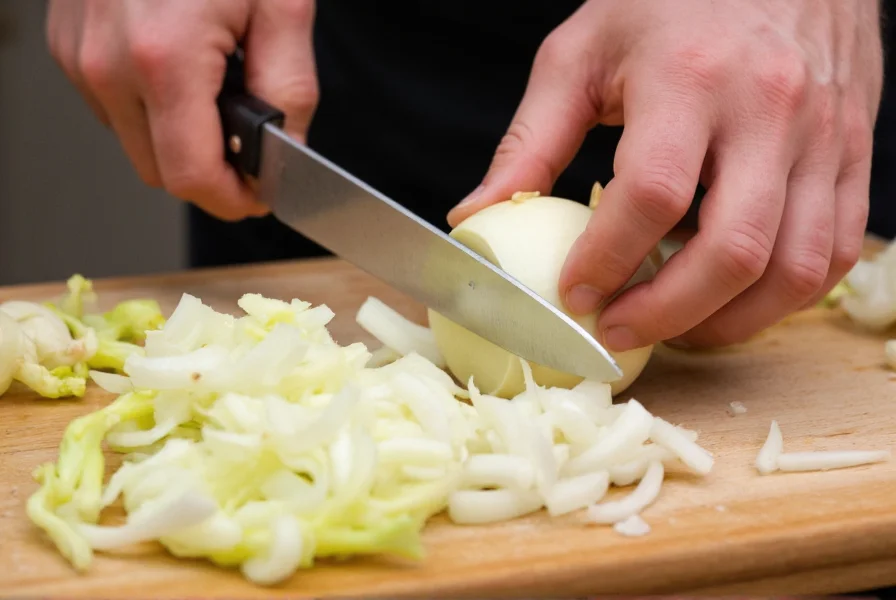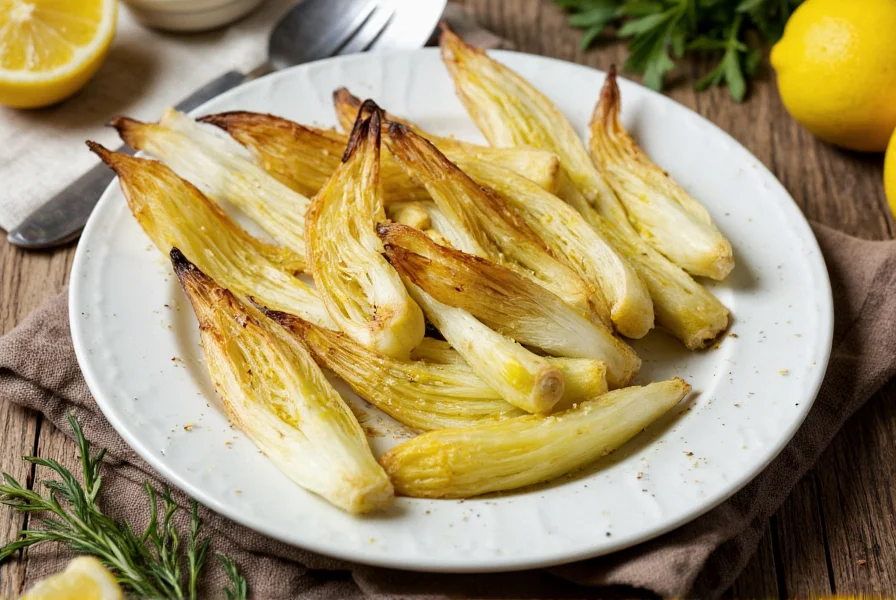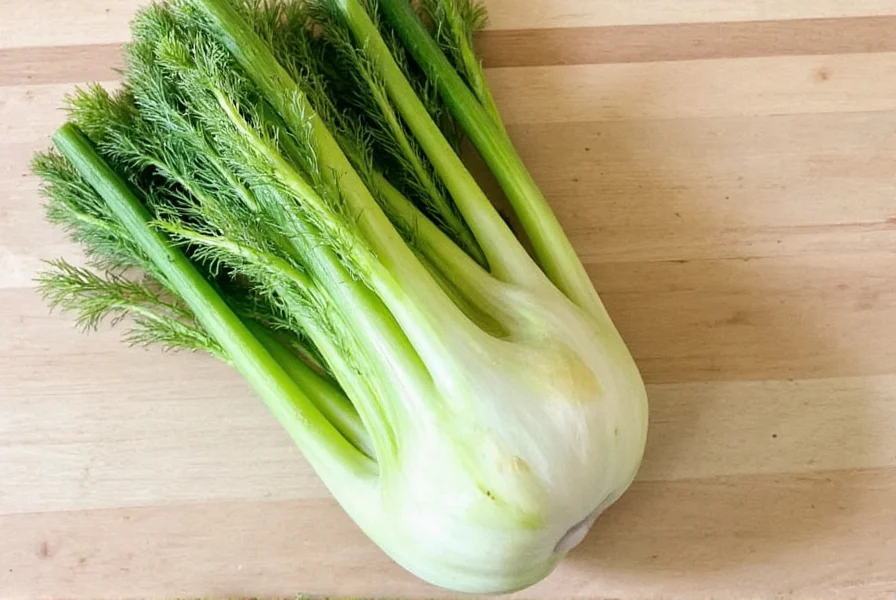Fennel's unique licorice-like flavor and crisp texture make it a chef's favorite across global cuisines. This complete guide reveals professional techniques for maximizing every part of this underutilized vegetable, transforming your cooking with minimal effort.
Understanding Fennel Anatomy
Fennel consists of three usable components:
| Component | Characteristics | Best Uses |
|---|---|---|
| Bulb | Crisp, white, layered structure | Raw salads, roasting, grilling |
| Fronds | Feathery green leaves | Herb substitute, garnish, pesto |
| Seeds | Small oval seeds in clusters | Spice blends, baking, tea |
Selecting and Storing Fennel Properly
Choose fennel bulbs that feel heavy for their size with crisp, bright white layers and vibrant green fronds. Avoid bulbs with brown spots or flowering stalks, which indicate maturity and potential toughness.
For optimal storage:
- Refrigerate whole bulbs in a perforated plastic bag for up to 5 days
- Store trimmed bulbs submerged in water in an airtight container
- Wrap fronds in damp paper towels before refrigerating
- Freeze seeds in an airtight container for up to 1 year

Step-by-Step Fennel Preparation
Follow these professional techniques for perfect fennel every time:
- Remove any wilted outer layers from the bulb
- Cut off the stalks about 1 inch above the bulb
- Slice off the root end while keeping the bulb intact
- Stand the bulb upright and slice vertically through the core
- Remove the tough core section if desired (optional for raw preparations)
- Slice against the grain for optimal tenderness
Culinary Applications for Fennel Bulb
The bulb transforms dramatically with different cooking methods:
Raw Preparation
Thinly slice bulb using a mandoline for crisp salads. The natural crunch holds up well to acidic dressings. Try combining with orange segments, olive oil, and lemon juice for a refreshing raw fennel salad with citrus dressing.
Roasting Technique
Cut bulb into 1-inch wedges, toss with olive oil, salt, and pepper. Roast at 400°F (200°C) for 25-30 minutes until caramelized and tender. The high heat transforms fennel's natural sugars, creating a sweet, mellow flavor perfect for roasted fennel side dishes.
Braising Method
Slice bulb thickly and simmer in broth or wine with aromatics. The slow cooking softens fennel's texture while infusing liquids with subtle anise notes. Excellent for braised fennel with chicken or fish dishes.

Creative Uses for Fennel Fronds
Don't discard these delicate greens—they're packed with flavor:
- Chop finely as a substitute for dill or parsley in dressings
- Use as a garnish for seafood dishes, particularly salmon and white fish
- Blend into compound butter for grilled meats
- Add to potato salad for a refreshing twist
- Make fennel frond pesto by substituting for basil
Harvesting and Using Fennel Seeds
When fennel flowers mature, they produce seeds ideal for harvesting:
- Wait until seed pods turn brown but before they split open
- Cut the entire flower head and place in a paper bag
- Store in a cool, dark place for 1-2 weeks until fully dry
- Shake the bag to release seeds from pods
- Sift to remove plant debris
Use fennel seeds in:
- Italian sausage seasoning blends
- Rye bread recipes
- Curry powders and garam masala
- Homemade liqueurs like absinthe
- Tea blends for digestive support
Fennel Across Global Cuisines
Different cultures showcase fennel uniquely:
- Mediterranean: Shaved raw in salads with citrus and olives
- Indian: Toasted seeds in tempering for dals and curries
- French: Braised with fish in classic bouillabaisse
- Chinese: Used in five-spice powder variations
- Mexican: Grilled with citrus for street food applications
Nutritional Benefits of Fennel
Fennel provides significant health advantages:
- Rich in vitamin C and potassium
- Contains fiber for digestive health
- Provides antioxidants like rosmarinic acid
- Naturally low in calories (about 30 per bulb)
- Traditionally used to support digestion
Common Fennel Mistakes to Avoid
Professional chefs recommend avoiding these pitfalls:
- Discarding the fronds (they're completely edible)
- Cooking fennel at too low a temperature (prevents proper caramelization)
- Overcooking raw preparations (loses crisp texture)
- Using dried fennel fronds as substitute for fresh (flavor degrades significantly)
- Storing fennel near ethylene-producing fruits like apples
Frequently Asked Questions
Can you eat all parts of the fennel plant?
Yes, the entire fennel plant is edible. The bulb works well raw or cooked, the feathery fronds function as a fresh herb, and the seeds serve as a spice. Even the flowering stalks can be used in stocks or pickled for unique flavor.
How do you reduce fennel's licorice flavor?
Cooking fennel significantly mutes its anise notes. Roasting, braising, or grilling transforms the flavor profile to sweet and nutty. For raw applications, pair with acidic ingredients like lemon juice or vinegar, which balance the licorice notes. Combining with strong flavors like olives, capers, or citrus also helps moderate the distinctive taste.
What's the best way to slice fennel for salads?
For salads, use a mandoline slicer to cut the bulb paper-thin against the grain. Soak the slices in ice water for 15-20 minutes to enhance crispness. This technique preserves maximum crunch while making the fennel more palatable for those sensitive to its natural flavor. Toss with citrus dressing immediately before serving to prevent wilting.
How long does fresh fennel last in the refrigerator?
Properly stored whole fennel lasts 4-5 days in the refrigerator. Keep it in the crisper drawer in a perforated plastic bag. For longer storage, trim the bulb, slice it, and submerge in cold water in an airtight container, which extends freshness to 7-10 days. Fennel seeds stored in an airtight container remain potent for 1-2 years.
Can fennel be frozen for later use?
Yes, fennel freezes well for cooked applications. Blanch bulb slices in boiling water for 2 minutes, then plunge into ice water. Drain thoroughly and freeze in airtight containers for up to 8 months. Note that frozen fennel loses its crisp texture, making it suitable only for soups, stews, and sauces—not raw preparations. Fennel seeds and fronds also freeze well without blanching.











 浙公网安备
33010002000092号
浙公网安备
33010002000092号 浙B2-20120091-4
浙B2-20120091-4